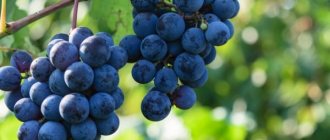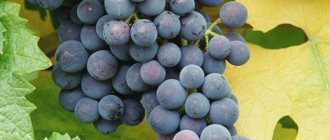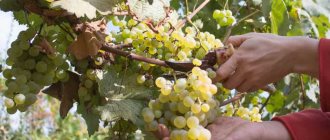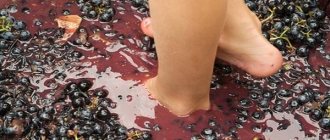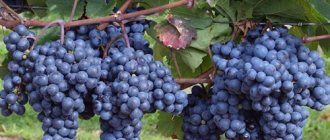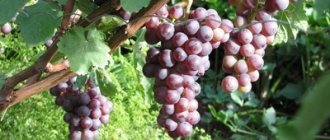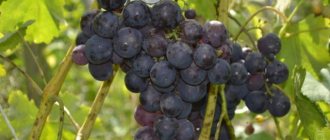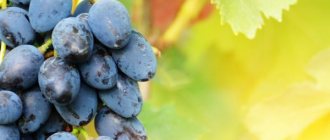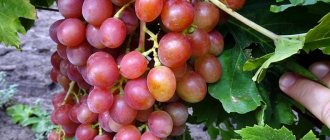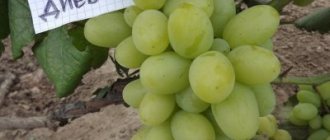LiveInternetLiveInternet
—Tags
—Categories
- Pictures for decoupage (806)
- Illustrations (108)
- Female image (102)
- Miscellaneous (84)
- Genre painting (75)
- Babes (67)
- Birds (55)
- Kitchen. Cooks (44)
- Cats (38)
- Painting (37)
- Vintage (28)
- Cities and countries (25)
- Curbs (18)
- Angels (18)
- Animal world (18)
- Stencils (17)
- Sea fishing (16)
- Backgrounds (16)
- Surrealism (14)
- Dogs (14)
- Graphics Monochrome (12)
- Flowers (12)
- Fashion and fashionistas (12)
- Provence (11)
- Hilda (8)
- Vegetable garden (461)
- Tomatoes (80)
- Tips for gardeners (57)
- Diseases and pests (54)
- Cucumbers (41)
- Seeds and seedlings (34)
- Feeding (34)
- Potatoes (24)
- Cabbage (23)
- Melon Pumpkin Watermelon (21)
- Plant compatibility (20)
- Peppers (14)
- Carrot (13)
- Beetroot (11)
- Luffa squash (10)
- Bow (10)
- Corn Peas Beans (8)
- Garlic (8)
- Crop rotation (7)
- Calendar (5)
- Eggplant (5)
- Miscellaneous (3)
- Herbs (2)
- Recipes (362)
- Baking (64)
- Winter preparations (51)
- Meat dishes (46)
- Vegetable dishes (41)
- Salads (36)
- Dessert (31)
- Snacks (24)
- Fast (20)
- Drinks (17)
- Jam Jams (14)
- Sauces (12)
- Secret tips (8)
- First courses (4)
- Garden (279)
- Gardening tips (94)
- Grapes (50)
- Garden diseases and pests (37)
- Cherry Cherry (22)
- Strawberry (21)
- Raspberry (17)
- Apple tree (16)
- Currant (15)
- Plum (9)
- Pear (9)
- Gooseberry (8)
- Peach Apricot (6)
- Interior (104)
- Color palette (11)
- Health (100)
- Country crafts (97)
- Decoupage (88)
- Ideas (50)
- Technology tools (32)
- Furniture alterations (78)
- Samodelkin (72)
- Handmade (67)
- Master class on decoupage (66)
- wooden items (39)
- Glass (18)
- Metal objects (5)
- Fabric (2)
- Decoration (63)
- Garden flowers (51)
- Country houses (45)
- Dacha (45)
- Green Pharmacy (44)
- Housekeeping tips (44)
- Washing (15)
- Repair (38)
- House (38)
- Care (37)
- Hair (23)
- Face (12)
- Learn to draw (29)
- Poultry farming (29)
- Beauty and health (28)
- Must remember (24)
- Music (18)
- Vysotsky (11)
- Vaenga (1)
- Proverbs Quotes Aphorisms (17)
- USSR (15)
- Floriculture (15)
- Clothes (12)
- WE NEED TO THINK (12)
- Poems (11)
- Greenhouses Greenhouses (11)
- LI.RU (8)
- Vet help (7)
- First aid (5)
- My soul. (3)
-Music
—Search by diary
—Subscription by e-mail
-Statistics
How many years do grape bushes bear fruit?
Industrial grafted vineyards operate mainly for eight years.
This is explained by the fact that during covering and uncovering by machines, the bushes are severely damaged, and by the eighth year there are many bald spots in the vineyard. In an amateur vineyard, where the bushes are carefully covered and uncovered by hand, the grapes can be used for much longer. Even 30 years is not the limit here. The main thing is that the bushes do not get bacterial cancer, and this is not uncommon for covered grapes.
But in the eighth year, even on amateur bushes, a decrease in yield was still noticed. To support fruiting, plants are rejuvenated by removing old sleeves and forming new ones. If you leave young shoots at the head of the bush to replace the sleeves, then the rejuvenation will be painless and there will be no interruptions in the harvest.
Related article: Pulsar - grapes
Sometimes such gentle rejuvenation does not help, and productivity is not restored. To do this, early in the spring, the bushes are dug up with a shovel and the entire above-ground part is cut off slightly below ground level. After this, the four strongest shoots are selected, and new branches of the bush are formed from them. This rejuvenation allows for another five to eight years to obtain abundant grape harvests.
To extend the period of high fruiting of grape bushes, they resort to accelerated formation, which makes it possible to obtain harvests a year earlier. To do this, the seedling is pruned so that two buds are located above the soil level. Two shoots grow from them in the summer, and in mid-June they need to be pinched at a height of about 30-50 cm.
Of the growing stepsons, the top two are left. Sleeves are formed from them next year. In the second year, a fruiting link is formed on each sleeve (fruiting vine + replacement knot).
As a result, seedlings produce the first signal harvest already in the second or third year, and in the fourth or fifth year they begin to bear fruit.
Some winegrowers, in order to speed up the start of fruiting, grow seedlings in a bucket, putting them on the vines left for layering and filling them with humus. Such layerings quickly take root and seedlings planted in a permanent place quickly begin to bear fruit.
Structure of a grape vine
Grapes are a vine plant that requires support for normal growth and development, but some varieties can bear fruit in a creeping state. The bush is conventionally divided into underground organs - the trunk and root system, and above-ground parts - the trunk with perennial and annual shoots (vines). In the wild state, the plant grows quickly and branches heavily, so all the nutritional elements go to the foliage part, and not to the berries. That is why cultivated grapes must be regularly pruned to form a shape that is convenient for work and to obtain a stable high yield. Find out about greenhouses for grapes in this article.
Sectional structure of a grape vine.
Root system
The underground or root part of the grape consists of two main elements - the original (main) root, which develops directly from the seed, and the adventitious ones, which are formed during the process of vegetative propagation. Features of structure and development:
- The main root is taproot, some varieties may have two or more. In favorable conditions, it actively develops and after the first year of life reaches a length of 1 meter. As the bush grows, 2nd and 3rd order roots are formed on the main root, which actively penetrate the soil;
- Adventitious roots are formed on annual and already woody shoots. They lack a cork layer, so they are very fragile and dry quickly. Depending on the order of growth, roots of the third and fourth order are distinguished - they are overgrown with thin roots up to 2 cm long during the season. They are the ones who participate in the active nutrition of the plant.
Depending on the growing conditions and variety, grape roots reach a length of 2 to 6 meters, occupying up to 5 meters of area. As a rule, the seedling is planted to a depth of 1 meter to create optimal conditions for the formation of adventitious roots.
Under industrial cultivation conditions, the root system of an adult grape bush takes on a fibrous shape, due to which the absorption capacity increases.
Tendrils and shoots
The above-ground part of the grape bush is represented by a system of shoots and tendrils. Without regular pruning, the vine can reach lengths of up to several meters. Cultivated grapes have a small trunk with a slight thickening in the upper part (the head of the bush), and numerous sleeves or shoulders extend from it. Usually the shoulders are cut to 35 cm; popularly this part of the bush is called “horns”. At their ends there are fruit vines, with replacement knots located at the base. It is from them that fruit-bearing shoots are formed for the next year; they are the main part of the bush in any forming method.
Parts of the trunk older than 2 years are called perennial wood, and the young part of the bush should normally consist of annual shoots on which tendrils and leaves are located. Tendrils grow at the base of the inflorescences and are necessary to maintain the vertical position of the vine.
Overwintering and stepson buds are formed in the leaf axil, from which shoots are subsequently formed. They develop extremely unevenly, so the formation of a bush always depends on the climate; during pruning, only the healthiest and strongest vines are left. In case of freezing or damage to the top of the grapes, dormant buds are used to restore the plant.
Lifespan
Grapevines are among the plants with very long lifespans, many of which are 100 years or more, Michael Gibson is quoted in The Sommelier's Preparatory Course. Newly planted vines take anywhere from three to five years to fully grow and begin bearing fruit. The age from 10 to 30 years is considered the main age of fruiting of grapevines. Wineries that harvest their wine grapes from older vines actually label their wine Old Wine or Vielle Vignes in French.
Improved life expectancy
Growing grapevines in a healthy cultural environment reduces disease and increases life expectancy. Grapevines grow well in a variety of well-drained soils. Plants do not thrive in poorly drained, heavy clay soil. The preferred soil is deep, well-drained loam. Plant the vines in an area with full sun as the fruit requires sun exposure to ripen. Choose a location protected from strong winds to avoid damaging the woody vines. Avoid planting in areas that tend to collect standing water during rainfall.
Subtleties of care
How many years does a grapevine live? The period depends on the care of the shrubs. Excessive amounts of water lead to numerous growths, and there is no longer enough strength to produce fruits. If the vines do not ripen, the buds will freeze in winter. Insufficient watering also negatively affects the well-being of grapes, and therefore moderation is recommended.
During watering, you can apply various fertilizers. Mineral and organic fertilizers are most often used. Organic matter is added once every 3 years, as well as phosphorus and potassium. In the spring months they limit themselves to compost, and with the onset of autumn they add manure.
Important! In spring, it is recommended to feed the grapes before winter shelters are removed from the bushes.
For plant health, fertilizing is applied three times during the growing season:
- the first time in the spring months before flowering begins;
- the second time, so that the ovaries are well formed before the formation of flowers;
- the third time before the fruits begin to ripen.
Harvest time
Picking ripe fruit is important because grapes do not ripen. Fruit color is not the only indicator of ripeness. Try table grapes as they will become sweeter and less sour when ripe. Fruit requires an average temperature of 50 degrees Fahrenheit or more to reach ripeness. The best thing to do is to taste the fruit regularly and note the dates. Harvest when the taste is to taste. This makes it easy to focus on harvest dates in subsequent years.
Related article: Shageni - grape variety
Varieties and their overall productivity
The main characteristic of the variety is its yield. The description of any variety indicates which category it belongs to: low-yielding, medium-yielding or high-yielding.
The most productive varieties: Arcadia, Athos, Byzantium, Gourmet, Kishmish and other varieties with a bunch weight of 1 - 2.5 kg. On average, 10 - 25 kg of fruits are collected from a bush.
What does productivity depend on?
The yield of grapes depends on the combination of many factors, which will ultimately give either an excellent harvest, or the result is far from your expectations. If we highlight the main criteria for good fruiting of grapes, then these include:
- Correct choice of planting material. You can plant grapes either with ready-made seedlings or grow the cuttings yourself until they are ready to be planted in open ground.
- Planting grapes. There are many nuances here that affect the final result, from the distance between the bushes to the depth of the planting hole.
- Choosing the right place and time of landing.
- Properly carried out annual pruning, with the correct formation of the bush and taking into account the adjustment of the load on the bush.
- High-quality preparation for winter and timely treatment of diseases.
- Watering and fertilizing.
- Plant age.
- Select a variety that suits your region. If you get the wrong variety, you may never see ripe grapes.
How to sprout a vine
There are two main ways to propagate grapes - growing by cuttings, layering and seeds. Cuttings are a faster process, always leading to rooting and development of the bush. This method is the most ancient and is used almost everywhere. The seed propagation method is usually used for decorative varieties and breeding hybrid forms.
From a seed
The process of growing vines from seeds requires certain skills and patience. This is the optimal method for warm regions and virgin grape varieties. This material will tell you how to grow grapes from seeds.
Step-by-step instruction:
- Seeds can be purchased or prepared yourself. After this, they need to be selected and tested for viability.
- The strongest and most intact seeds should be washed and soaked in 200 ml of distilled water for a day.
- Each seed must be planted in an individual pot with a pre-prepared substrate. The first shoots appear within 2-8 weeks from planting.
- Picking is done when the seedlings reach a height of up to 8 cm. It is advisable to keep the seedlings in a pot until they grow to 30 cm and 5-6 healthy and strong leaves appear. After this, the young vine can be transplanted into open ground.
Grape seeds need to be stratified (stratified). To do this, they are put in a dark and cold place for 1-2 months.
Grape seeds can remain in a state of stratification for up to several years without loss of germination quality.
From a cutting
The process of planting cuttings is a technologically complex process, but if all stages are followed, the percentage of rooting is extremely high.
Algorithm for cutting vines:
- Cutting pipes. It is advisable to carry out the procedure only at above-zero temperatures, when all the foliage falls from the bush. It is best to choose branches that have formed more brushes. The cutting should be as even as possible.
- Storage of cuttings until spring is carried out in a dark and cold place, for example, a basement, refrigerator or cellar. This link will tell you about the preparation and storage of grape cuttings in the fall.
- Preparing for landing. Before planting seedlings in open ground, they must be carefully inspected for rot and damage, and a diagnostic cut must be made. Ideally, the cut area should be green and slightly moist. After sorting, the pipes are immersed in a container of water for 2 days, and then in a solution of a growth stimulator.
- Germination is carried out in water, but it is recommended to leave the cuttings in a container filled with a light and breathable substrate.
- Planting is usually carried out in the spring after stable warm temperatures have been reached. Cuttings should be planted in pre-prepared individual holes, maintaining the distance between the bushes.
Planting in open ground can be done when the cuttings have taken root and several green leaves have appeared.
By region
In the climatic conditions of the Moscow region, it is recommended to grow very early grape varieties, which have a ripening period of 110 to 115 days, since later varieties will not have time to produce a harvest before the first frost.
For cultivation in Siberia, biologists have developed frost-resistant varieties that can withstand up to 40 degrees below zero.
Grapes are planted when the soil warms up to 13-15 degrees. Before planting, fill the hole with hot water to prepare the soil. The seedlings are well covered until the threat of cold weather disappears.
In central Russia, it is recommended to grow early varieties (Crystal, Yantar, Vostorg) and medium-ripening varieties (Alexander, Bashkirsky). In addition, technical varieties (Alievsky, Ermak) and universal varieties are also suitable for growing under these conditions.
What affects fruiting
Every gardener, when purchasing a new fruit or flowering seedling, immediately imagines the plant in all its glory. Having planted grapes, you want to taste their delicious juicy berries as quickly as possible. But when can we expect the first fruits?
So, how long after planting do grapes begin to bear fruit? The length of time from planting to first fruiting varies. In industrial vineyards, the first harvest is harvested after four years. Such a long period is due to agricultural cultivation technology.
Industrial vineyards stretch over entire hectares of land. Accordingly, they are formed in such a way that in the future they spend a minimum of time on the bush and get a maximum harvest. For this purpose, formative pruning is carried out during the first three years.
Only two main vines are left. Accordingly, while the bush is undergoing formation, it does not bear fruit. But it strengthens well and consistently produces a large harvest in the future.
Vineyards formed in this way do not need frequent watering, which is very convenient on an industrial scale.
Important! Fruiting in the first years weakens the bush. To make it resistant to diseases and conditions, it is better to pick off the first bunches.
It is believed that a grape bush begins to bear fruit four years after rooting. That is, from the moment the first roots appear on the cuttings, you can start counting. However, some factors, including the actions of gardeners, can either speed up or delay the time of harvest.
On average, grapes begin to bear fruit in the third year after planting, and you can get a bountiful harvest already in the fourth.
After planting the grape cuttings in a permanent place in February, you can get the first harvest in the second year.
There are several factors that will directly influence the appearance of the first bunches in the future. Let's look at each of them in detail.
Selecting a location
You can, of course, grow grapes on any piece of soil. But it should also be taken into account that its composition directly determines how the seedlings will feel in the ground, how they will take root and what kind of harvest they will produce in the future. It is worth mentioning that grapes are unpretentious, and any soil except saline soil is suitable for them.
The planting site should be selected on the south side; planting in lowlands should be avoided. If the bushes are planted in a lowland, then there is a possibility that cold air will accumulate in this place and the plants will be damaged by spring frosts.
You can protect the vineyard by planting it near the walls of houses and fences. Or create artificial protection for it. For example, build a wall of bricks. The most acceptable option is the north or south of the site, well lit by the sun.
A certain distance should be left between the bushes - 2 meters. This will help the seedlings quickly gain strength and correctly form a shading zone, which is needed for protection from direct rays of the sun.
Boarding time
It is possible to grow a quality crop only after it is planted correctly and at the right time. After all, a certain air temperature and weather directly affect the ability of a young plant to take root and develop.
It is necessary that the soil warms up to 15 degrees or more. The higher the air and soil temperatures, the faster the seedlings form a strong root system and take root.
Proper pruning
The time when grapes produce their first harvest can be brought closer with the help of correct and timely pruning. It is necessary for the crop to form a strong bush, which will subsequently provide future clusters with the necessary nutrients.
The first pruning should be aimed at creating the main shoots, there should be only two of them. At the beginning of autumn, part of the top is cut off or pinched. At the beginning of winter, when the vine is fully ripe, pruning is carried out by 3-4 buds, and the stepsons that form the next year above the second leaf are pinched.
The inflorescences are also removed. Caring for the layering consists of shelter, feeding and other manipulations.
The time when it should be carried out is spring and summer. During this period, it is best to apply only phosphorus or nitrogen fertilizers, since organic ones do not give the desired effect during this period.
Organics are introduced with the onset of autumn. Fertilizers should be placed 40-60 centimeters deep and within a radius of one meter from the trunk. You can also carry out foliar feeding, which is absorbed almost instantly. Simply spray diluted fertilizer onto the foliage.
It is possible and even necessary to use root fertilizers and external fertilizers together; this will protect the grapes from rot and fungal diseases.
Planting and caring for the vineyard according to the rules will allow you to enjoy the first berries already in the 2-3rd year after planting. But it happens that gardeners cannot achieve a harvest even in the 5th-6th year, since the fruiting of the crop depends on many conditions that were not taken into account when planting grape bushes.
There are several factors that influence the rate of berry formation.
Selecting a location
The culture is very demanding on where it grows, so when choosing a site, you should give preference to areas that are well-lit by the sun and reliably protected from drafts.
The plant will grow and develop poorly in cool lowlands and at the foot of slopes. Groundwater should approach the surface no more than 2.5 m. It is not recommended to place the vineyard next to fruit trees, as the plants will begin to compete for survival, this will negatively affect the yield.
Landing dates
The first rule for successful growth, rapid fruiting and high annual yields is timely planting. Because the air temperature and weather will determine how quickly the seedlings will take root and develop in the future.
Planting work should be carried out in the spring, when the soil warms up to 15 degrees. During the summer period, the roots adapt, this will allow the plant to survive the winter without problems.
The landing time depends on the climatic conditions of the region. In the southern regions, planting is recommended in February, in northern latitudes - in April and May.
Trimming
An important agrotechnical technique in obtaining a healthy plant is pruning, the purpose of which, during the period of accumulation of the vegetative mass of the bush, is to create a strong skeleton and well-developed annual shoots, as well as to give shape in accordance with the environmental conditions of growth.
Important! By cutting the grapes short, you can slow down their fruiting, and if you ignore the procedure, ripening will be delayed, since the plant will spend a lot of energy on weak, unnecessary shoots.
Top dressing
The ripening of the vine depends on the amount of nutrients supplied during the growing season. Fertilizing with organic and mineral fertilizers will have a good effect on the speed of crop ripening. Add organic matter, phosphorus and potassium once every 3 years. In the spring, limit yourself to compost, and in the autumn, enrich the soil with manure.
A culture can also tell you what nutrients it needs. If the growth of grapes slows down, and the foliage becomes smaller and falls off prematurely, this signals a nitrogen deficiency. A lack of phosphorus causes darkening and lethargy of the leaves, and the loss of taste of the berries and yellowing of the leaves is considered a sign of a lack of potassium fertilizers.
When growing, it is important to choose the right grape variety, taking into account the climatic conditions in which it will grow. To do this, you need to understand the timing of ripening so that the selected variety has enough heat to fully ripen. Also take into account frost resistance and resistance to fungal diseases.
It is better to give preference to seedlings grown in natural and climatic conditions close to those in which it will be further cultivated.
Diseases and pests
Pests of grapes include spider mites and phylloxera. These insects are capable of destroying a crop in a short time. Diseases of grapes inhibit its development and fruiting, and can also cause the death of grapes.
Preventive procedures are considered effective measures in solving problems:
- Regular removal of weeds and loosening the soil will prevent pest larvae from settling in it.
- Spring treatment before the buds of the bushes against diseases and parasites using universal-purpose insecticides.
- Deep digging of the soil around the grapes in the fall, after harvesting and falling leaves. This operation helps to aerate the root system, retain moisture, and also destroy overwintering larvae.
- When diseases and pests appear, promptly carry out proper treatment, namely the elimination of infected parts of the plant, collection and subsequent burning of fallen leaves from infected bushes.
Carrying out preventive measures will help not only keep the vine healthy, but also reduce the waiting period for fruit.
When does the harvest begin?
The most important question that interests all gardeners is: when do grapes begin to bear fruit after planting as seedlings? If the rules of agricultural technology are observed, grapes begin to bear fruit in the third and even in the second year of planting.
To obtain a harvest in a short time, it is advisable to purchase seedlings with a closed root system. The vine growth should be mature, approximately 5 to 7 mm thick. If such a plant is planted in the fall and carefully protected from the winter cold, it will bloom next year.
Two or three year old seedlings take root more difficult , but with proper care they begin to bear fruit in the year of planting. The fruits ripen on them for 3 months.
By storing one flowering cluster on each shoot, the fruit ripening period is reduced by 10 days.
When planting grape cuttings, fruiting occurs 4 years after the first roots appear.
If cuttings are planted in the ground in the spring before the sap begins to flow along the stems, the plant will take root faster, but during the summer it will not have time to grow enough to bear fruit next year. It will bloom in 2 years.
Related article: Anush grape variety
If the cuttings are planted in high pots in February, then in the warmth they will give an increase of 45-50 cm by the beginning of summer. When they are transferred to a permanent place in open ground, flowers will appear in the second year, but a full harvest will only be obtained in the fourth year.
Bush structure
The grape bush consists of aboveground and underground parts. When forming, they work only with the upper part of the plant. The following types of bush are distinguished depending on the method of its formation:
- Fan. Each fruit link is on its own sleeve and is used most often;
- Cordonny. It differs from the fan only in the number of shoulders and sleeves, as well as the location of the fruit link;
- Arched. It is used both for growing cultivated varieties and for decorating the site. Used more often for non-covering varieties;
- Unsupported standard. The bush is represented by a high trunk, on which perennial branches are symmetrically located. Installation of trellises and supports is not required.
The arrangement of bushes in one row largely depends on the variety. The distance between plants varies from 1.25 to 2.5 meters, depending on the growth strength of the foliage and the volume of the crown. Read about planting and caring for grapes in open ground here.
For what year?
First
In the first year after planting, it is necessary to provide the plant with proper care with careful adherence to agricultural technology conditions. The main task in the first year is to grow a healthy vine and carry out high-quality pruning. These conditions determine how many years it will begin to bear fruit and whether there will be a harvest at all in the following years. At this stage of development, the flowers are cut off.
Second
In the second year, the vine begins to bear fruit, but since two-year-old grapes have 3-4 branches, the grape clusters will be large (depending on the variety), but their number will be less than that of an adult vine. With good care, you can achieve a harvest that is 2 times less than that which the vine will ripen in subsequent years.
Third
In the third year, the bush has already become stronger, the root system has grown, and fruiting will be in accordance with the yield indicators of each variety. On average, the harvest will be 15-20 kg per bush.
Yield growth increases every year during the 8-9 years of fruiting of the bush. After this, yields gradually decrease until the bush is rejuvenated.
The oldest grapevine on Earth.
Grapevines are long-lived and can grow for more than 1000 years. It is known that on the Don - before the “fight against vineyards” - there grew arrays of vines, united by a continuous cataulac, which, according to preliminary estimates by scientists, were up to 700-800 years old.
At the moment, the oldest grapevine on Earth - from those still bearing fruit - grows in Slovenia and is almost 440 years old. I'll tell you about her. There are also older grape plants, but they no longer bear fruit, although they are still very beautiful. I will introduce you to several amazingly beautiful old vines on different continents of our planet.
One of them, the oldest grapevine in Australia, is listed in the Guinness Book of Records. Here is her memorial plaque nearby.
Old vine, memorial plaque.
This vine was planted in 1867 (Baxter Sherry variety) and has never been fertilized or watered since. Despite this, every year in March it produces a harvest. In 1936, two and a half tons of grapes were harvested from it, one bunch of which weighed about 6.5 kilograms.
In girth at the base this vine is 1m 86cm thick, and at a level of 30cm from the base it is 1m 78cm. The measurements were carried out in 2008. And after that the plant was listed in the Guinness Book of Records as “the largest grapevine in Australia.” But that's not all!
-Also in Australia, the Barossa Valley is home to the world's oldest operating commercial vineyard , which was originally planted with Shiraz grapevines in 1847.
-Right here in the Barassa_vines Valley, the Penfolds Kalimna vineyard has Cabernet Sauvignon vines planted in 1888, and is the oldest vineyard of this variety still producing wine.
The oldest grapevine in the United States is located in the state of Carolina.
— In the USA, North Carolina, Manteo, on Roanoke Island, there grows a grape bush, one of the oldest on Earth and the oldest in the USA, whose age is (unspecified) 400-500 years. Perhaps this is the great-great...great-mother of many grape bushes, but, alas, it no longer bears fruit.
The oldest grapevine with a fully certified minimum age is known as the Big Grapevine and is native to Hampton Court in England. It was transplanted here as a new location under the direction of Lancelot Capability Brown as an adult in 1769. The grape variety is 'Chiva Grossa' (also known as Black Hamburg). Every year this vine bore from 2000 to 3000 clusters of black grapes, but in order not to deplete it too much, only 1200 clusters were left. Their weight reached almost 300 kilograms, and they were intended only for the royal table. Contrary to the belief that old vines degenerate, this vine produced its largest harvest of 383 kilograms (845 lb). in the fall of 2001, when she was already more than 250 years old.
The Hampton Court vine grew in a huge glass greenhouse, but its root was not in the greenhouse, but in the courtyard near the glass wall. The vines from this grape root grew so strongly and cheerfully that there was no longer enough space for them in the greenhouse hall, so the size of the greenhouse had to be constantly increased. If the branches of this grape plant could be stretched into one line, it would reach a hundred meters in length. Now all that remains of her are her descendants, much younger vines... but what arches and galleries they are!
Arches and galleries of Hampton Court
In the South Tyrol wine region of north-eastern Italy, Castel Katzenzungen grows Italy's oldest 350-year-old Versoaln vine. Its harvest is used for winemaking. The wine is produced as a blend of grapes from older vines mixed with grapes from younger vines, and is produced in approximately 500 bottles per year.
Versoaln vine in Italy
fruit-bearing grapevine on EARTH is now growing in Slovenia in the Lente district of Maribor on Vojašniška Street. This bush, from which grapes are still harvested, was planted in the city in 1580. Already in the 1600s. this vine appeared in one of the paintings by a local artist called "The Old Vine"). Now this work of art can be seen in the museum of Graz, the capital of the federal state of Styria in southeastern Austria.
Currently, this vine bush called Old Vine is the only plant that has its own museum - the Old Vine House . The Old Vine is currently almost 440 years old, but it does not look powerful at all, but rather young!
Closer view of the old vine)
The Old Vine was planted in Maribor at the end of the Middle Ages, when Maribor was besieged by the Turks. She managed to survive during the period of fierce fighting between the invaders and the defenders of the city. Back then, in ancient times, the current Old Vine House was part of the city fortress wall, and now there is a Vine Museum, a wine library and a tasting room where you can taste elite wines produced in the surrounding wineries. The Old Vine itself, whose age is officially estimated at 438 years, also still bears fruit and produces clusters of noble wine grapes. But now it’s not much - from 35 to 40 kg of grapes-)) The annual city festival of wine and culinary arts begins in Maribor in October with the harvest from the Old Loza and ends with the Feast of St. Martin in Maribor. This is the most vibrant celebration of St. Martin, and it lasts the whole day.
about a specific variety of this oldest grapevine ))—
The variety is called “velvet black”, or, in Slovenian, “modra kavčina” (synonyms Zhametovka, Cologne blue, Ametovka, Kavčina črna).
Žametovka is an old Slovenian late-ripening, dark-colored wine grape variety. From the beginning of the growing season to full maturity, about 170 days pass. These grapes require a sunny position and are relatively resistant to winter frost, but can be damaged by spring frosts. The clusters of this variety are large or medium (250-400 g). The berries are high in sugar content and are used in the production of sweet wines with natural residual sugar. The variety is also suitable for the table - as a table grape. Although this grape variety is a “member of the family” Vitis Vinifera, it is reported to have Muscadine V. rotundifolia
Michx.
- V. round-leaved.
Uskadina
berries are used to produce various medicinal biologically active supplements that prolong human life.
The reason is the record content of polyphenols. Read more about the Zhametovka variety. The oldest grapevine.
Clusters of Old Vine. Wine from these rare grapes, however, is made and bottled in 250 ml glass bottles, designed by the famous artist Oscar Kogoy.
Up to 100 of these unique bottles are filled annually. And they sell this wine. But the waiting list is several years!
The oldest grapevine on our planet and the only one of its kind, the Žametovka variety is the oldest living grapevine still producing berries. Many winegrowers dream of propagating it for themselves. Scions of this vine grow throughout the world and in many parts of Slovenia itself.
PS Once the vines reach 20 years of age or older, they usually begin to produce smaller yields, allowing for concentrated, intense wines to be made. For example, in California (USA), the most popular variety for making expensive wines is Zinfandel, because its vines, up to 125 years old, produce small quantities of very high quality harvests.
Old vine in Kakheti.
There are beautiful old fruit-bearing vines in Kakheti (Georgia) aged 135 -150 years. There are already few clusters on these grapevines, but they weigh 4-5 kg.
And wine from the berries of these vines is said to continue to improve.))
Like?
- 43
Shared
Diseases and pests
Each disease or pest significantly reduces yield. Let's briefly look at the main ones:
- When grapes are affected by downy mildew, the flowers and ovary dry out; with ordinary powdery mildew, the fruits burst and rot.
- Anthracnose and black spot cause blackness and death of bunches.
- Fruits affected by cercospora blight turn blue, wrinkle and fall off.
- With root rot, the bush itself dies.
- With gray rot, a fluffy coating appears on the grapes and foliage. The berries fall off.
- Phylloxera (grape aphid) is a very dangerous pest. She sucks the juices from the roots, the bush dies.
- The felt mite envelops the fruits in felt, and the growth of the bush slows down.
- Caterpillars of leaf rollers and mealybugs eat leaves and fruits.
Errors
At first time
To obtain the first harvest, great importance is given to pruning and shaping the bush to adjust the correct load on the vine. The bush quickly becomes overgrown with excess green mass and young shoots, which consume 90% of the nutrients. The size and quality of the bunches decreases, the harvest will be poor.
If all the growing points on the shoots are cut off (all the stepsons are pinched), wintering points begin to grow, which should bear fruit next year, then next year the harvest will be meager.
With frequent and abundant watering, the green mass will begin to actively grow, the ripening of the bunches will be delayed, and the sugar content of the fruit will decrease. Therefore, in the second half of summer, when the berries ripen, watering is reduced.
All in all
If grapes are planted on the north side of the house or in the shade of trees, then the vine will reach towards the light, the bush itself will grow weak, rare flowers will fall off and there will be no harvest.
A seedling with a shallow planting will have roots that freeze in the winter and will dry out in the summer.
When the leaves dry out, you should not use abundant watering; this sign may be the beginning of a disease or a lack of nutrients. We need to figure out the cause and eliminate it.
Planting grapes in a garden plot is not difficult even for an inexperienced gardener. The main thing is to follow the necessary rules of agricultural technology. Their further growth, quality and quantity of the future harvest depend on how comfortable the planted bushes feel.
What are the benefits of old vines?
The older the vines, the deeper their roots go into the ground; they have very limited yields. The consequence is a high concentration of flavors and aromas in the berries. In addition, older vines are better adapted to the environment and manage water resources more intelligently.
Because of this, with age, the berries decrease in size, they contain less juice and pulp, and the skin becomes denser and accumulates more tannins. Thus, older vines produce more complex wines, known for their strong aromatics and high quality.
The vine does not have a peak yield: it either bears fruit or becomes too old
So is wine made from grapes from old vines better? Yes, provided that the winegrower works conscientiously. If he has taken care to ensure that his vines are not sick or damaged, grapes from old vines will produce better quality wine than those from young ones.

